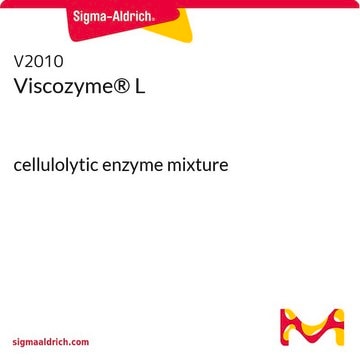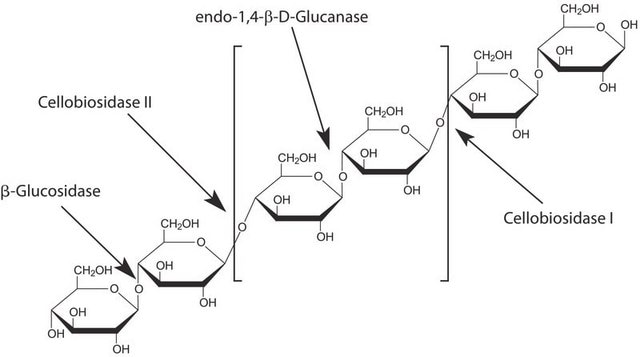The product is offered on the basis of activity. The purity has not been determined.
C1184
Cellulase from Aspergillus niger
powder, ≥0.3 units/mg solid
Sinónimos:
1,4-(1,3:1,4)-β-D-Glucan 4-glucanohydrolase
Seleccione un Tamaño
89,60 €
Seleccione un Tamaño
About This Item
89,60 €
Productos recomendados
Formulario
powder
Nivel de calidad
actividad específica
≥0.3 units/mg solid
características de los productos alternativos más sostenibles
Design for Energy Efficiency
Learn more about the Principles of Green Chemistry.
sustainability
Greener Alternative Product
categoría alternativa más sostenible
, Enabling
temp. de almacenamiento
2-8°C
¿Está buscando productos similares? Visita Guía de comparación de productos
Descripción general
Cellulase belongs to the family of glycoside hydrolase,[1] which is secreted by various cellulolytic microorganisms.[2]
Aplicación
Acciones bioquímicas o fisiológicas
Definición de unidad
Otras notas
sustrato
Palabra de señalización
Danger
Frases de peligro
Consejos de prudencia
Clasificaciones de peligro
Resp. Sens. 1
Código de clase de almacenamiento
11 - Combustible Solids
Clase de riesgo para el agua (WGK)
WGK 1
Punto de inflamabilidad (°F)
Not applicable
Punto de inflamabilidad (°C)
Not applicable
Equipo de protección personal
dust mask type N95 (US), Eyeshields, Faceshields, Gloves
Elija entre una de las versiones más recientes:
Certificados de análisis (COA)
¿No ve la versión correcta?
Si necesita una versión concreta, puede buscar un certificado específico por el número de lote.
¿Ya tiene este producto?
Encuentre la documentación para los productos que ha comprado recientemente en la Biblioteca de documentos.
Los clientes también vieron
Protocolos
To standardize an enzymatic assay procedure of cellulase.
-
Can you please provide the percent purity of the product?
1 respuesta-
¿Le ha resultado útil?
-
-
Does product C1184 have hemicellulase activity, such as xylanase? I am looking for cellulase without hemicellulase activity.
1 respuesta-
Hemicellulase activity of this product has not been tested.
¿Le ha resultado útil?
-
-
What is the solution stability of Cellulase, Product C1184?
1 respuesta-
Sigma-Aldrich has not determined the solution stability for this product. However, it is reported in Methods in Enzymology, 160, 264 (1988) that cellulase from Aspergillus niger is "completely stable over the range of pH 5.0-8.0 at 4°C for 24 hours and retains about 50% of its original activity after heating at 70°C for 10 minutes. The enzyme is completely inactivated by heating at 80°C for 10 minutes".
¿Le ha resultado útil?
-
-
What is the molecular weight of Product C1184, Cellulase from Aspergillus niger?
1 respuesta-
The molecular weight is 26,000 Daltons.
¿Le ha resultado útil?
-
-
Are there any additives to Cellulase, Product C1184, in addition to the enzyme itself?
1 respuesta-
Per information from our supplier, maltodextrin is an extender in this product. Maltodextrin can vary in glucose chain lengths of 2-12. There can also be some free glucose in the product. Either sorbitol or propylene glycol is added to the product as a stabilizer during processing. These components may be "flashed off" during processing, but some small amount may still be present.
¿Le ha resultado útil?
-
-
What is the Department of Transportation shipping information for this product?
1 respuesta-
Transportation information can be found in Section 14 of the product's (M)SDS.To access the shipping information for this material, use the link on the product detail page for the product.
¿Le ha resultado útil?
-
Filtros activos
Nuestro equipo de científicos tiene experiencia en todas las áreas de investigación: Ciencias de la vida, Ciencia de los materiales, Síntesis química, Cromatografía, Analítica y muchas otras.
Póngase en contacto con el Servicio técnico







